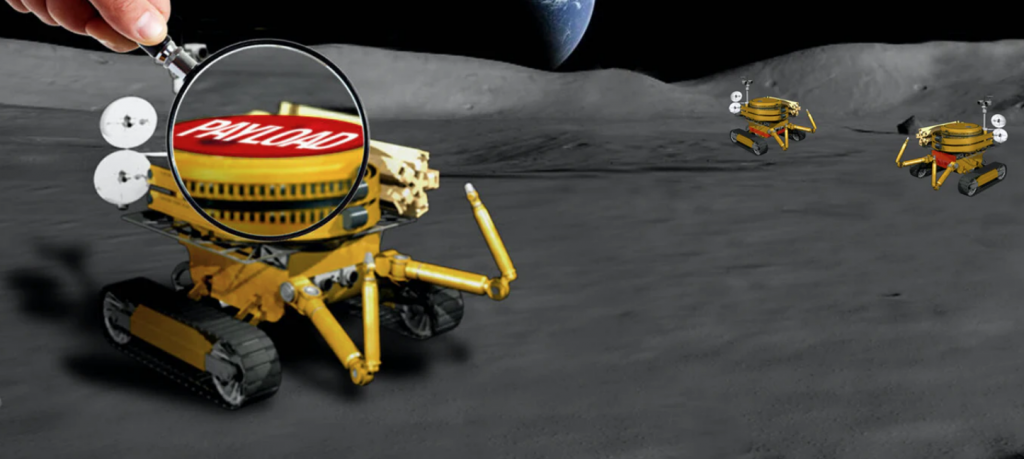
Tiny robotic explorers will move across the lunar surface. (Source: NASA)
‘Honey, I Shrunk the NASA Payload’ Contest Leads to Mini Innovations
When you think of space launches, you might picture enormous rockets, which carry enormous payloads—the weight of their cargo. It costs staggering sums to lift these payloads into the heavens.
Sending as little as a pound of payload into Earth’s orbit totals as much as $10,000, according to NASA.
In a quest to build a lighter payload, NASA held a contest called “Honey, I Shrunk the NASA Payload,” in which it recently announced six winners. The miniature payload designs could be used for future lunar missions. Each involves tiny robots, some as small as a bar of soap, which are expected to cross the surface of the Moon collecting information on its resources and environment.
According to inverse.com, the tiny robots are taking on a big mission: setting the stage for a sustainable human presence on the Moon, and possibly exploring other planets in the future. The challenge was funded by NASA’s Lunar Surface Innovation Initiative, which calls for next-generation technologies to support future exploration and long-duration presence of the Moon.
“The ideas generated by the community were outstanding,” Sabah Bux, a technologist at NASA’s Jet Propulsion Laboratory, announced. “These designs could help NASA sustain a human presence on the Moon and enable new science.”
A total of $160,000 in prizes was awarded to first, second, and third place winners under two categories; lunar resource potential and lunar environment.
The tiny robots are expected to identify minerals, volatile compounds and resources on the Moon, including water. The first place team created the “Puli Lunar Water Snooper,” mini robotic hunter of water molecules on the Moon able to endure the rough lunar environment.
The agency is planning to send a tiny rover to the Moon by 2022. Named Iris, the rover in development is as small as a shoebox and under 5 pounds.
Building the next generation of mini robotic explorers could be the start of something really big for NASA.
read more at inverse.com







Leave A Comment